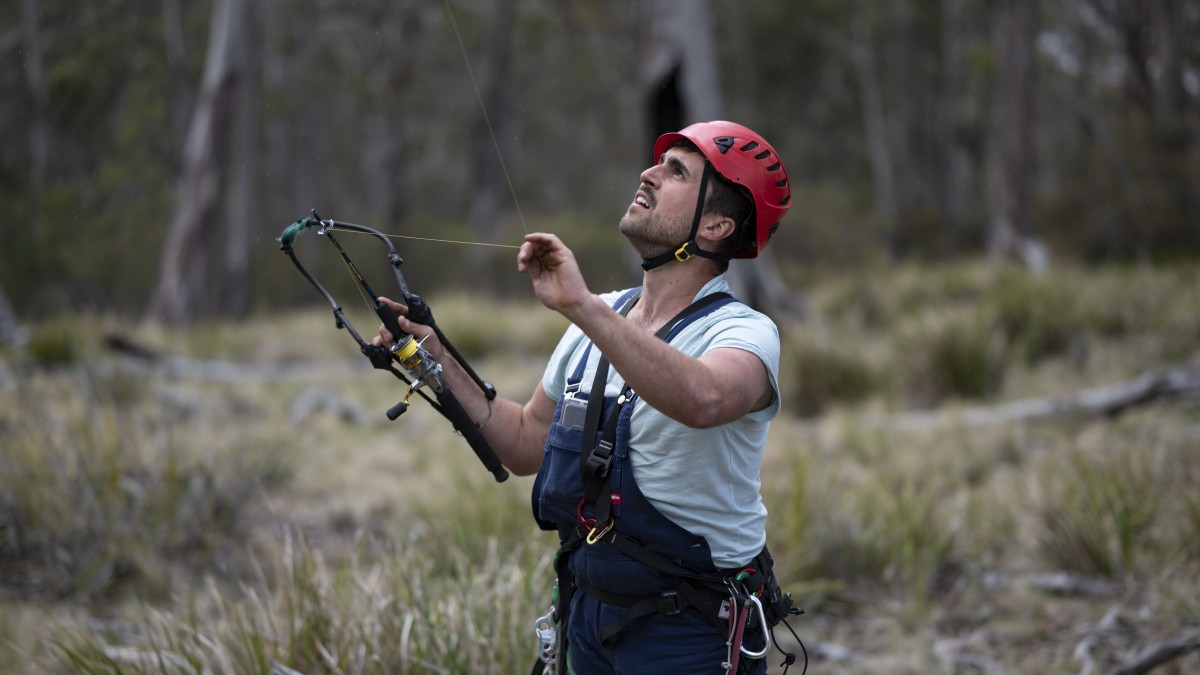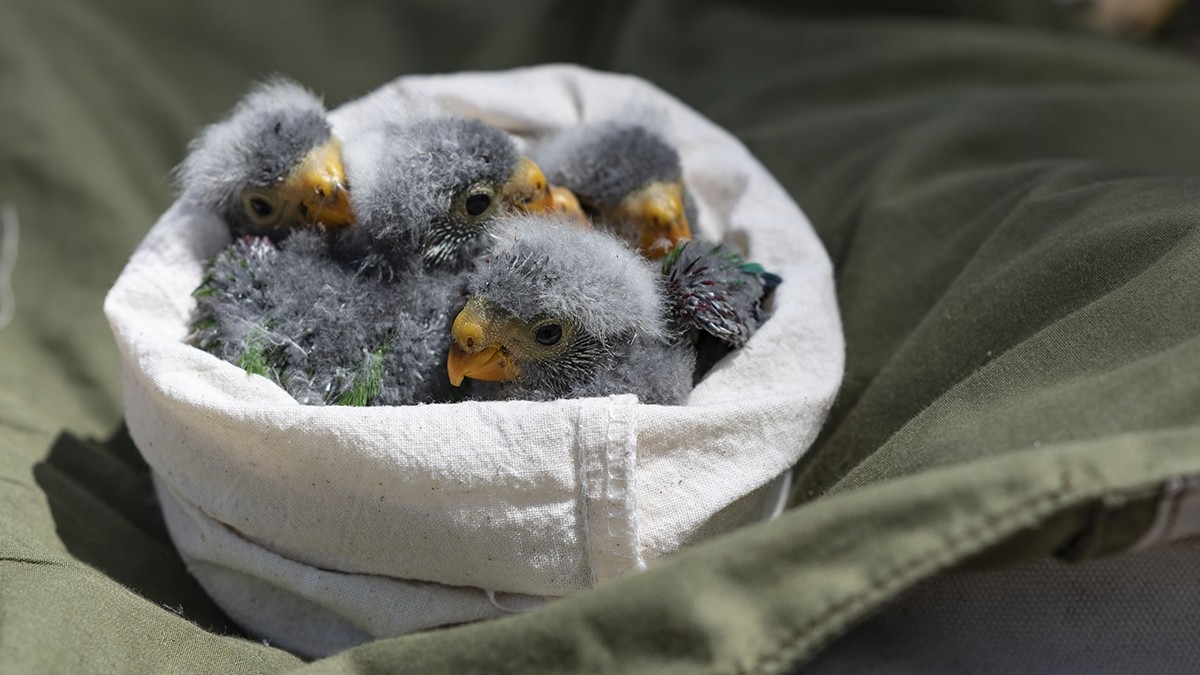Science on Location - Bruny Island
By James Walsh, College of Systems and Society
You don’t expect to surf all the way from the Tasmanian mainland to Bruny Island, but that’s exactly what happens.
Aboard a barge crammed with bird-watchers, a few farmers and an ice cream truck, you ride the waves out into the D’Entrecasteaux Channel. The Channel is narrow, but not so narrow to evade the 80km/hour wind gusts. Large waves pummel the barge, sending lashes of salty spray over your car. Gnarly.
Looking out onto the windswept Bruny Island coastline, you try to picture a swift parrot flying in winds of this force. It seems like a journey that is too difficult to be worthwhile for a small and endangered bird. But as you will find out, this is exactly where a swift parrot needs to go.
Bruny Island is virtually the only remaining habitat left where swift parrots can safely raise their hatchlings. Once, Tasmania was a haven for the species, with plentiful old growth forests for them to raise their young. Tasmanian old growth forest is no longer plentiful, though.
The old growth forests are a necessity for species like the swift parrots. It’s the age of the trees that make them ideal for a swift parrot to make a safe home. As a Tasmanian blue gum ages beyond 200 years, hollows develop in its branches. Here is where you’ll find a swift parrot hatchling, protected from the intrusions of predators.
There remains a single predator that can reach inside a hollow, the sugar glider, which is an introduced species to Tasmania. They have become an increasing threat to swift parrots as populations have diminished. This is why Dr Dejan Stojanovic is here. With his colleagues at the memorably named Difficult Bird Group, he has been researching the parrots for over 10 years.

Dr Stojanovic has brought you to a plot of land on North Bruny Island so you can see how his research is contributing to conservation efforts. The land, managed by the Weetapoona Aboriginal Corporation, is covered in blue gum and peppermint forest. He explains that logging and sugar gliders pose a dual threat to the existence of swift parrots.
“Although logging is still the biggest threat to swift parrots, logging leaves a patchwork of small areas of forest that are usually occupied by sugar gliders. It means the gliders are there waiting for the parents to come back from the winter to breed. They're basically just sitting ducks.”
Stepping out of a battle-scarred Hilux, you ask Dr Stojanovic just how bad the situation currently is.
“They're critically endangered, which really is as bad as it can get before they're all dead.
“Estimates have previously assumed that there could be as few as 2000 left but we suspect there's actually many fewer than that.”
If you bump into Dr Stojanovic in the field, you might mistake him for a fisherman, rock climber, or even a member of the Village People. Over his blue overalls, he wears a harness and helmet, and carries a slingshot and rope.
The elaborate getup is what he needs to reach swift parrot nests. With the rope secured over a high branch, he deftly ascends it until he reaches a hollow. Here, he carefully removes the chicks and places them into a calico bag before descending to the forest floor again.
Dr Stojanovic weighs and measures each hatchling’s vital stats. Each time he reaches into the calico bag, he brings out a small grey fluffy ball, with blue and green feathers poking though. The fluffy ball has a yellow beak that is remarkably dinosaur-like. You hear its raspy squawk as it is checked under the fluff for ticks. The chicks’ stats and location are recorded before being returned to their hollow in a suitably swift manner.
There’s an urgency in the way that Dr Stojanovic works. He moves around the forest floor with his eyes and ears constantly to the canopy. Occasionally he cocks his head, listening intently. Moments later he bolts into the tall grass, jumping over logs and under branches. Later, you ask what requires such urgency.
“The parents make a couple of calls that indicate they are about to go to their nest. If you follow them, you can find their nest. Otherwise it might be a four-hour wait before they make that call again.”
It’s not the only challenge in conducting this kind of long-term field work.
“The swift parrots are nomadic, so they could be nesting anywhere along the 400 kilometres of Tasmanian east coast. We have to start from scratch each spring, driving around the countryside to visit a network of over 1500 monitoring sites. We visit these sites multiple times to figure out where the birds are and where the food availability is.”

Dr Stojanovic’s hard work has started to pay off.
“Our most tangible success was having the species uplisted to critically endangered.
“It's effectively changed the way the law deals with swift parrot habitat when it comes to further deforestation. A critically endangered listing means that we can recognise the importance of a patch of habitat to the extinction of a species.”
At this point, Dr Stojanovic says the survival of the swift parrots is a question of politics.
“The science is clear. We know where the swift parrot breeding habitats are in Tasmania. Yet we continue to log those habitats anyway.
“We are actively choosing to push this species further toward extinction.”
Then Dr Stojanovic cocks his head and disappears into the bush again.

